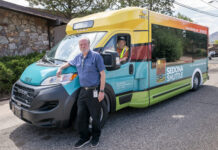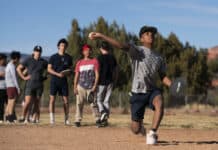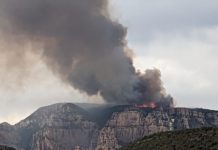With the 2016 election season in full swing, those vying for seats on the Sedona City Council were asked a variety of questions pertaining to issues facing the city — both today and in the future.
Q: What made you decide to run for City Council?
I have been on the City Council for four years and believe I have had a real and positive impact on the decisions the City Council has made. When I first ran four years ago I wanted to represent everyone in Sedona, even those who don’t vote or participate. I also knew I wanted to voice a different perspective than what I had been hearing. My reasons for running for re-election haven’t changed much. What has changed is that I know how to work with the six other people on council to make effective and thoughtful decisions about Sedona’s future.
I have to confess to being a policy wonk. The details and the complexity of the issues the council considers intrigue me. I carefully study the issues that come before the council and look for practical solutions that can be achieved in the best interests of all of Sedona.
Q: What specific ideas do you have to address the traffic issue?
I want to see what recommendations for better traffic management come out of the comprehensive traffic and transit study currently underway. I think it’s prudent and necessary to consider all the options we have before making decisions to move ahead on any. It only makes sense to know what the options are and how they work together before proceeding. The City Council will have to make a series of critical and difficult decisions about how to stage and finance those improvements. I know that can be done and that we can improve traffic here in Sedona. What we need on council is the political will to make those difficult decisions. As my past four years on council has demonstrated, I can and will make difficult decisions.
Q: Often, the vocal minority is the loudest voice when it comes to a topic in the city. How do you balance not only their concerns but the remaining majority of the community as well?
My experience has been that people who are vehemently against something are the ones that send us emails and show up at City Council meetings. We don’t hear much from people in support of an action. The majority of people in Sedona don’t come to council meetings or send us emails; they either are satisfied with what the council is doing or are busy earning a living and tending to their families and other obligations. Council’s job is to represent them as well.
Councils cannot simply listen to the loudest voices; that is irresponsible and does not serve the whole community. I always carefully study an issue and think through what it means and what effect it will have on Sedona in the years to come. Council decisions don’t just affect current residents but will impact community residents 20 years from now. That said, sometimes a proposal can be tweaked to address some concerns from the minority opponents, in that should be done whenever feasible.
Q:What do you see as the top issues facing Sedona these days and why?
Sedona’s success as a tourist destination has resulted in increased traffic, overuse and deterioration of popular trails, insufficient trailhead parking and other impacts on residents. Managing our burgeoning tourism is one of the top priorities for the next council.
There is much we can do to address those quality of life issues, and the current council has already taken significant steps in that direction. The comprehensive traffic and transit study will lay the foundation for traffic mitigation. We are working with the Forest Service regarding trailheads within the city.
Another important issue facing Sedona is identifying funding for infrastructure improvements, including traffic. Having a current traffic plan will make Sedona more competitive for Federal and State funding for traffic improvements. In addition, the city manager is creating a citizen work group to recommend additional sources of funding for city infrastructure.
Q: The city owns 200 acres across from the wastewater treatment plan on State Route 89A. How would you like to see that land used?
I don’t know how that land should be used. People have made a variety of suggestions about how it could be used, and a group of citizens made recommendations in a report a couple of years ago. There’s no rush to do something with the land, and I prefer that a public process be undertaken to engage the community in planning for the land.



















